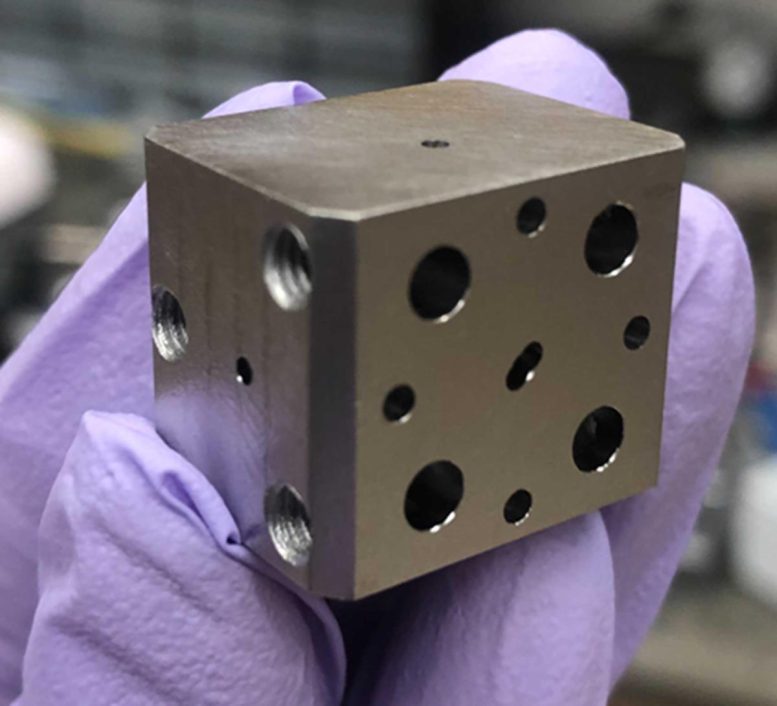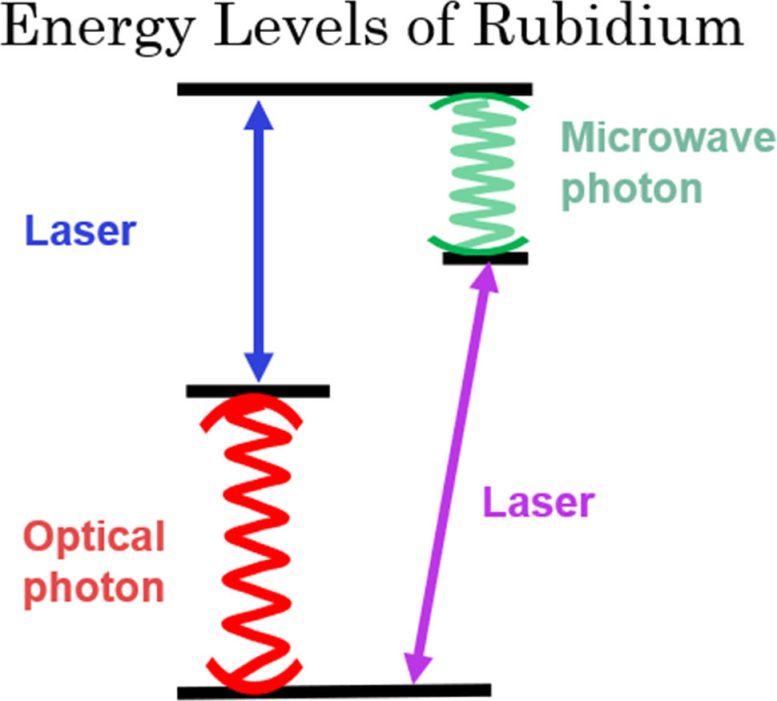
Scientists have uncovered a method to convert quantum information between various quantum technologies, which holds significant impliciations for quantum computing, communication, and networking.
The study, which was published in the journal Nature, was financially supported by the Army Research Office (ARO), the Air Force Office of Scientific Research (AFOSR), and the NSF Quantum Leap Challenge Institute for Hybrid Quantum Architectures and Networks (HQAN), led by the University of Illinois Urbana-Champaign. This represents an innovative approach to transforming quantum information from the format utilized by quantum computers to the format required for quantum communication.
Photons—particles of light—are essential for quantum information technologies, but different technologies use them at different frequencies. For example, some of the most common quantum computing technology is based on superconducting qubits, such as those used by tech giants Google and IBM; these qubits store quantum information in photons that move at microwave frequencies.
But if you want to build a quantum network, or connect quantum computers, you can’t send around microwave photons because their grip on their quantum information is too weak to survive the trip.
“A lot of the technologies that we use for classical communication—cell phones, Wi-Fi, GPS, and things like that—all use microwave frequencies of light,” said Aishwarya Kumar, a postdoc at the James Franck Institute at the University of Chicago and lead author on the paper. “But you can’t do that for quantum communication because the quantum information you need is in a single photon. And at microwave frequencies, that information will get buried in thermal noise.”

The solution is to transfer the quantum information to a higher-frequency photon, called an optical photon, which is much more resilient against ambient noise. But the information can’t be transferred directly from photon to photon; instead, we need intermediary matter. Some experiments design solid-state devices for this purpose, but Kumar’s experiment aimed for something more fundamental: atoms.
The electrons in atoms are only ever allowed to have certain specific amounts of energy, called energy levels. If an electron is sitting at a lower energy level, it can be excited to a higher energy level by hitting it with a photon whose energy exactly matches the difference between the higher and lower level. Similarly, when an electron is forced to drop to a lower energy level, the atom then emits a photon with an energy that matches the energy difference between levels.
Rubidium atoms happen to have two gaps in their levels that Kumar’s technology exploits: one that exactly equals the energy of a microwave photon, and one that exactly equals the energy of an optical photon. By using lasers to shift the atom’s electron energies up and down, the technology allows the atom to absorb a microwave photon with quantum information and then emit an optical photon with that quantum information. This translation between different modes of quantum information is called “transduction.”
Effectively using atoms for this purpose is made possible by the significant progress scientists have made in manipulating such small objects. “We as a community have built remarkable technology in the last 20 or 30 years that lets us control essentially everything about the atoms,” Kumar said. “So the experiment is very controlled and efficient.”
He says the other secret to their success is the field’s progress in cavity quantum electrodynamics, where a photon is trapped in a superconducting, reflective chamber. Forcing the photon to bounce around in an enclosed space, the superconducting cavity strengthens the interaction between the photon and whatever matter is placed inside it.
Their chamber doesn’t look very enclosed—in fact, it more closely resembles a block of Swiss cheese. But what looks like holes are actually tunnels that intersect in a very specific geometry, so that photons or atoms can be trapped at an intersection. It’s a clever design that also allows researchers access to the chamber so they can inject the atoms and the photons.
The technology works both ways: it can transfer quantum information from microwave photons to optical photons, and vice versa. So it can be on either side of a long-distance connection between two superconducting qubit quantum computers, and serve as a fundamental building block to a quantum internet.
But Kumar thinks there may be a lot more applications for this technology than just quantum networking. Its core ability is to strongly entangle atoms and photons—an essential, and difficult task in many different quantum technologies across the field.
“One of the things that we’re really excited about is the ability of this platform to generate really efficient entanglement,” he said. “Entanglement is central to almost everything quantum that we care about, from computing to simulations to metrology and atomic clocks. I’m excited to see what else we can do.”
Reference: “Quantum-enabled millimetre wave to optical transduction using neutral atoms” by Aishwarya Kumar, Aziza Suleymanzade, Mark Stone, Lavanya Taneja, Alexander Anferov, David I. Schuster and Jonathan Simon, 22 March 2023, Nature.
DOI: 10.1038/s41586-023-05740-2